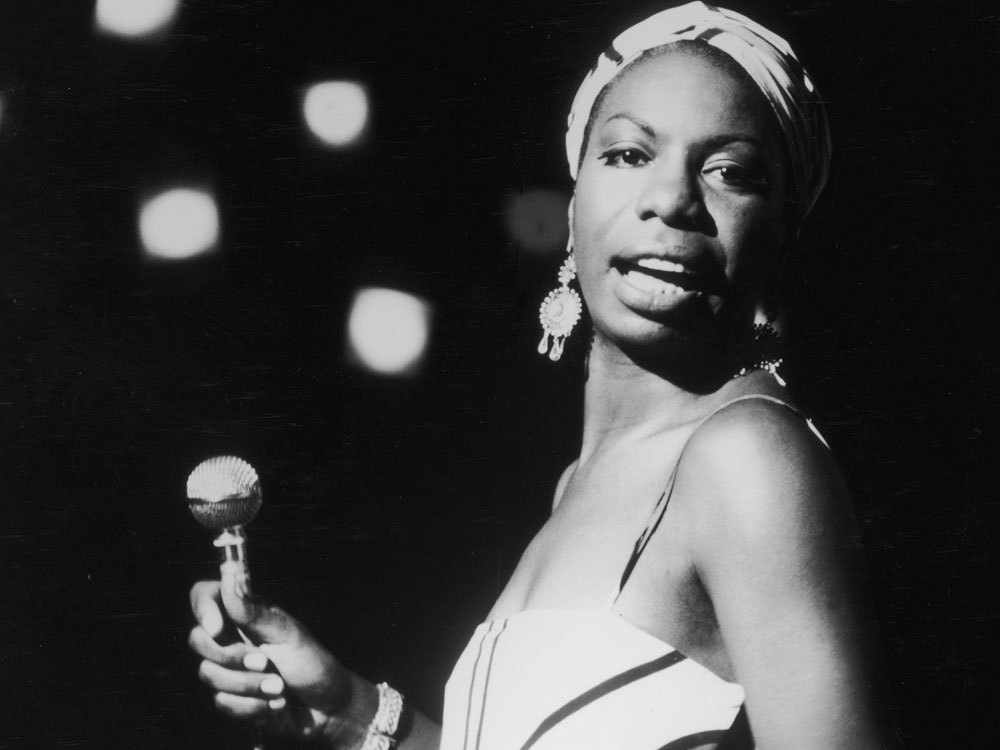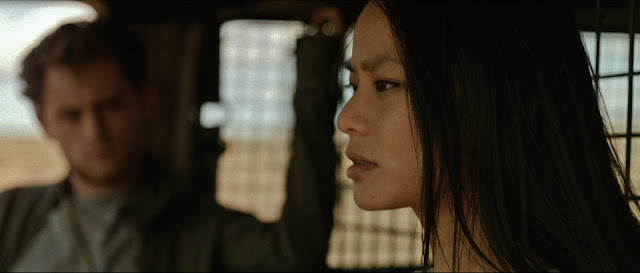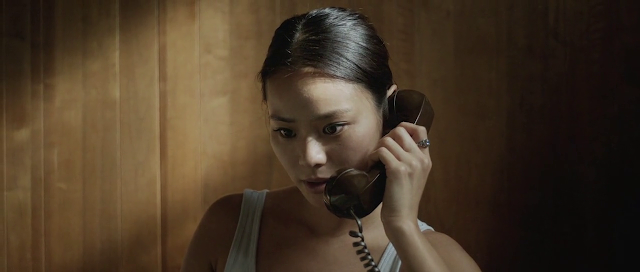Anyone could make a pretty good video montage of Nina Simone in popular culture: first that iconic Chanel commercial featuring Simone’s version of “My Baby Just Cares For Me,” then an early pre-Wallace-and-Gromit Aardman Studios short in which a sexy, clay-mation cat chanteuse sings the same song (in Simone’s voice), and finally Julie Delpy near the very end of Before Sunset imitating Simone’s stage patter (white people, please, let’s not mimic Black people ever) for Ethan Hawke. But what these clips lack is Simone’s face, when her dark skin, wide nose, and full lips differentiated her from other Black women who were popular stars in the mid-twentieth century, like Diahann Carroll and Lena Horne, and even the Black women we see in movies and TV today. A recent bio-pic of Simone, which never had a real release in theaters, featured lighter-skinned star Zoe Saldana wearing dark makeup and a fake nose to play one of the first Black woman entertainers who performed with her hair natural and long earrings that brushed her shoulders in African-inspired dresses and head wraps.
Liz Garbus’s new documentary, What Happened, Miss Simone? (which opens in New York this week and will be streaming on Netflix starting this Friday, June 26) has glorious closeups of Simone’s face throughout. The film commences with a clip of a live performance at the 1976 Montreux Jazz Festival when, after a long glare at the audience, she says, “We’ll start from the beginning.”
Simone grew up poor in the Jim Crow South, but because her mother was a preacher, played the piano from a young age. At a church concert a couple of white women recognized Simone’s talent and she began to train as a classical pianist with the town’s white instructor. Simone practiced seven or eight hours every day, so even as a child was isolated from her peers, both Black and white. Segregation kept her from fulfilling her early dream; although she was able to attend Julliard (thanks to fundraising efforts in her hometown) she failed her audition for The Curtis Institute in Philadelphia. She later learned she was turned down because she was Black (a side note: classical auditions are now conducted with the musician hidden from view, a change that has been key in helping modern orchestras get closer to gender parity).
Simone adopted the pseudonym we know her by (she was born Eunice Waymon) taking “Nina” from a boyfriend’s nickname for her and “Simone” from the French actress Simone Signoret to perform the “devil’s music” in bars to support herself and her family. She had never sung before but was told at her first job she had to. Incorporating virtuoso piano technique with the greatest jazz improvisers’ instincts (Simone says she would sometimes change key in the middle of a song–her longtime guitarist Al Schackman was one of the few musicians who could keep up with her) along with a beautiful, distinctive voice and a deep, emotional connection to whatever she sang, she soon became a star. She performed blues, pop, and jazz songs as well as show tunes, remaking each of them in her own style. As critic Stanley Crouch says during the film, no one would ever mistake her work for that of anyone else.

She married a New York vice cop, Andrew Stroud, who became her manager (which rarely turns out well). He physically and sexually abused her and pushed her to perform and tour more, even as she, like a lot of musicians who while away much of their childhood practicing, began to question if she really wanted a music career.
The civil rights movement gave her renewed purpose: she cultivated friendships with other Black artists, like Langston Hughes (who co-wrote with her “Backlash Blues”) and Lorraine Hansberry (the godmother of Simone’s daughter, Lisa Simone Kelly, who is interviewed extensively in the film). Simone also performed for the marchers with Martin Luther King at Selma and wrote “Mississippi Goddam” in response to the killing of Medgar Edgers and the four little girls in Alabama. She was close to Malcolm X’s wife and children and lived a short distance from them in Mount Vernon, New York, where her daughter became an honorary member of their family.
Like many others from that era she became disillusioned in the wake of the assassinations of civil rights leaders, and when the revolution so many spoke of and believed in during the 1960s never came. Manifesting symptoms of the bipolar disorder doctors would eventually diagnose (her mental illness was probably exacerbated by the beatings) she abandoned her marriage–and, for a time, her daughter–and never lived in the United States again.
The film has many great performance clips of Simone (including a moment in Montreux where she goes from palpable anger to laughter as an audience member spontaneously shouts out to her). I wish the film included even more of Simone’s music. The interviews are all first-rate and thorough, even as the interviewees, like Stroud and Schackman, seem to have opposing viewpoints. Lisa Simone Kelly is remarkably even-tempered in her remembrances of her mother as a genius and a star, but also as the person who physically and emotionally abused her. She says, “People think that when she came out onstage she became Nina Simone. My mother was Nina Simone 24/7 and that’s where it became a problem.”
[youtube_sc url=”https://www.youtube.com/watch?v=moOQXZxriKY” iv_load_policy=”3″]
In theory I’m the ideal audience member to see Eden, Mia Hansen-Løve’s latest film, a fictionalized bio of her brother Sven Hansen-Løve (he co-wrote the script) about his days as a well-known DJ in Paris. Although I’ve never been to Paris, I spent enough time in US clubs in the 1990s that when I recognized a familiar song quietly humming in the background of an early scene, I started swaying in my seat in anticipation of hearing the song at full volume and becoming enveloped in a mass of lights and dancing bodies. But those few faint notes were all the film included; the characters end up walking away from the music in that scene, a metaphor for the film itself.

We all want to do the best we can for our families (well, most of us do) but Hansen-Løve seems to have zero affinity for the music, fashion, atmosphere, and dancing of the club scene in the ’90s and 2000s. Her idea of a great club scene is one in which the main character says of Daft Punk, “They’re killing it,” instead of letting us see, hear, and come to that conclusion ourselves. She should have steered her brother to a different director.
Additionally, the women in the life of the main character, who never gives us any reason to care about him, Paul (Félix de Givry) are, with one exception, nothing more than the interchangeable ciphers we’ve seen in every movie about straight, white, male protagonists. Each woman is ready to drop everything, either to accompany Paul on his US tour or clean up after him when he vomits. Greta Gerwig, in an English-speaking role, is the only one allowed ambitions of her own and she is on screen far too briefly.
Somewhere in this film of club scenes that are often tedious and indistinguishable from each other (Eden is 131 minutes long, but you’ll swear it lasts the same couple of decades the film covers) is the bare bones of a decent story: what it’s like to outlive the fashionability of one’s talents and tastes. After a disastrous gig, a drunk and drugged-out Paul is carried home from the club by his friends and as they pass an older woman on the staircase she says something about, “The youth of today.”
He retorts, “I’m 34!” That’s a pretty good line, but it’s the only one in this morass of a film.
[youtube_sc url=”https://www.youtube.com/watch?v=2l1T9xs-o0o” iv_load_policy=”3″]
___________________________________________________
Ren Jender is a queer writer-performer/producer putting a film together. Her writing, besides appearing every week on Bitch Flicks, has also been published in The Toast, RH Reality Check, xoJane and the Feminist Wire. You can follow her on Twitter @renjender




